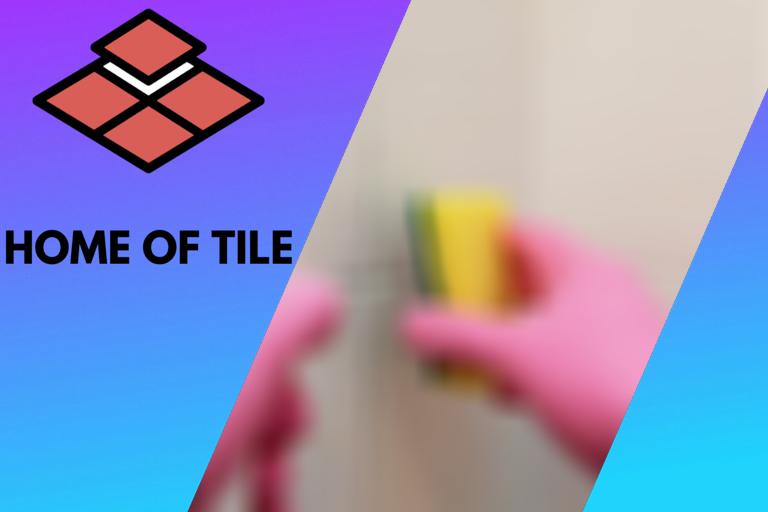How To Seal Grout on Tile Floors. What professionals say
Sealing grout is a simple and essential procedure that enhances the longevity of your home’s floors by preventing water damage. The grout sealer bonds with the cement in the grout lines between the tiles, creating a barrier that prevents mold and bacterial growth. However, grout sealing must be done correctly with quality tools and the correct procedure.
Here are eight simple steps to seal grout on tile floors:
- Source the correct items required for sealing grout.
- Clean the tiles properly and leave them to cure.
- Tape the tiles for protection.
- Apply the grout sealer along the horizontal lines.
- Remove the tape.
- Clean off the excess grout.
- Seal the vertical lines with tape.
- Leave the grout to dry.

This article will outline in detail the steps you should follow to seal grout on tiled floors. Keep reading to find out more!
Contents
- 1 1. Source the Correct Items Required for Sealing Grout
- 2 2. Clean the Tiles Properly and Leave Them To Cure
- 3 3. Tape the Tiles for Protection
- 4 4. Apply the Grout Sealer Along the Horizontal Lines
- 5 5. Remove the Tape
- 6 6. Clean Off the Excess Grout Sealer
- 7 7. Seal the Vertical Lines With Tape
- 8 8. Leave the Grout To Dry
- 9 Final Thoughts
1. Source the Correct Items Required for Sealing Grout
The first step is to get the right items needed for sealing grout. These include a grout sealer, a grout sealer applicator, and nitrile gloves. Depending on whether the grout you wish to seal is old or new, you may also require additional tools. For instance, you will also need a grout brush and cleaning solution for old grout.
The grout sealer is essential in binding the tiles together, thus preventing moisture entry. Therefore, ensure the grout sealer you select is of good quality by considering its water resistance, durability, and application procedure.
Always consider these factors before choosing the type of grout sealer you prefer, including spray grout sealer, penetrating grout sealer, applicator grout sealer, and membrane grout sealer.
Choose one of the two grout sealer applicators. You can use either the brush-tipped applicator or the roller wheel type applicator. The former is ideal for sealing small and vertical grout joints in backsplashes and showers. The latter works best when sealing wider grout lines.
2. Clean the Tiles Properly and Leave Them To Cure
The next step is to clean the tiles properly and leave them to cure. This is arguably the most crucial step in the process. Usually, people wonder why their grout lines get dirty and suffer from water damage despite frequent cleaning. This is because the durability and effectiveness of your grout sealer depend on how well you clean the surface before applying the sealer.
You need dishwashing liquid, a cleaning sponge, and clean water to remove the dirt. You may also need to vacuum the floor before cleaning if there is debris on the floor. Cleaning the floor well ensures no dirt or mud gets into the grout lines, preventing the grout sealer from bonding well in the joints.
Remember to leave new surfaces to sit and cure for about 72 hours. For old surfaces, clean them well and leave them to dry before proceeding with the application.
3. Tape the Tiles for Protection
After cleaning the surface properly, the next step is to tape the tiles horizontally from one seam to another using masking tape. This is essential because it protects the tiles and gives the sealant straight edges once the sealing process is complete.
You should also use masking tape to cover and protect nearby surfaces that should not come into contact with the sealant. Failure to do any of these often results in tiles with crooked edges and damage to nearby surfaces because of unintentional staining from the sealant.
4. Apply the Grout Sealer Along the Horizontal Lines
The next step after cleaning and taping the surfaces is the application of the grout sealer. Always ensure you have your safety gear on before applying the sealer.
Apply the grout sealer along the horizontal grout lines using a foam brush. This process often takes time, depending on the surface you wish to apply the grout sealer.
Use the foam brush to apply a thin coat of grout sealer on the lines. Then, wait thirty minutes to one hour before applying another thin coat over the first coat. This reinforces the sealant and ensures it is appropriately applied.
5. Remove the Tape
After applying the second coat, wait for it to dry before removing the masking tape. Then, remove the masking tape used to protect the tiles and surrounding surfaces. You will want to use a dry piece of cloth to remove the debris and remains from the grout sealant that did not bond to the surface.
Doing this leaves you with a clean surface with a well-bonded grout sealant. Do not remove the masking tape before the second coat is dry because this may ruin the grout application job.
6. Clean Off the Excess Grout Sealer
After removing the masking tape, use a damp cloth to clean off any excess grout sealer from the grout lines between the tiles before it cures. You can also dampen the piece of cloth with warm water if the sealer has already dried.
However, the story is different with spray grout sealers because you can remove them immediately after application, unlike liquid grout sealers.
7. Seal the Vertical Lines With Tape
Floor tiles usually have horizontal and vertical grout lines. Therefore, you will need to repeat the same procedure above for the horizontal joints between the tiles. Tape the horizontal grout lines carefully and apply the grout sealer. Then, remove the tape and clean the tiles’ horizontal lines.
Finishing work on the vertical lines before doing the horizontal lines is advisable because it is more systematic and efficient than doing both simultaneously and missing some spaces.
8. Leave the Grout To Dry
Finally, you can now leave the grout to dry and cure. Usually, regular floor spaces take up to 46 hours to dry, while bathroom floors and tiles take a little longer. Therefore, wait for 46 hours before walking on your newly sealed floor and 72 hours before taking a shower.
If you wish to confirm whether or not the grout sealant has dried properly, splash some water on the surface and observe. If the water forms a puddle on the surface with grout sealant, it is properly sealed and dry.
Final Thoughts
Sealing the grout lines on your tiled floors is an essential procedure that enhances the longevity of your home floors. Unfortunately, some people do not know how to seal their tiled floors properly.
If you encounter problems applying grout sealer, consider consulting a professional for fast and efficient assistance. Otherwise, the steps above should be sufficient to help you seal your tiled floors.








